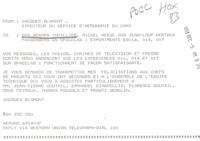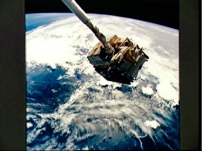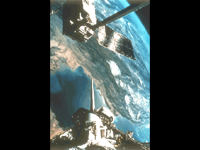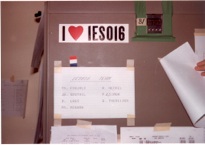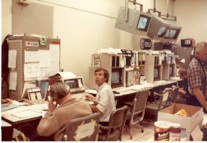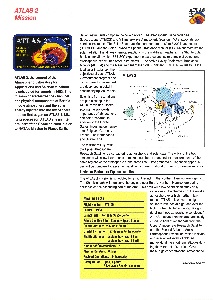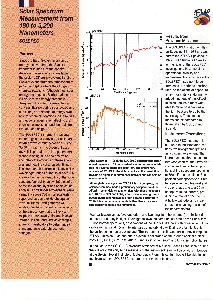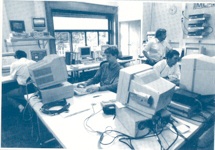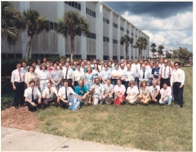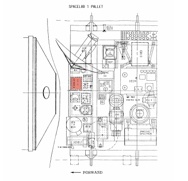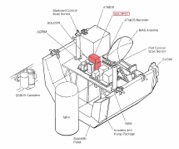Solar spectral irradiance and its variability has been already carry out by this type of instrument, during five ESA & NASA space missions. At the end of each mission, the instrument has been retrieved on ground and has permit to perform an absolute calibration after the flight.


Mission: STS-09
Launch: 28 November 1983
Duration: 10 days 7 hours 47 minutes
Landing: 8 December 1983
The instrument, called 1ES016, was on board the Columbia space shuttle. The Sun pointing was performed by the shuttle itself. Scientific data were stored and displayed directly on the instrument EGSE, in real time, by the 1ES016 team, at Johnson Space Flight Centre, in Houston.
Missions: STS-46 and STS-57
Launch: 31 July 1992 (STS-46 mission)
Duration: 334 days
Landing: 1 July 1993 (STS-57 mission)
The instrument, called SOSP, was on board the EURECA satellite: European Retrievable Carrier. This satellite was deployed by the remote manipulator arm, on 1rst August, 1992. The spacecraft thrusters were fired to boost EURECA to its planned operating attitude of about 310 statute miles. One year after, it was to be retrieved on STS-57. The satellite was pointing the Sun during all the mission. Scientific data were got, on ground via ESOC (Darmstadt), directly in our institute and in near real time.
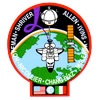


1ES016 Team List
Service d’Aeronomie Director Congratulations, after Launch
1ES016 Team at JSFC
(Houston)


Missions
Mission: STS-45
Launch: 24 March 1992
Duration: 8 days 22 hours 9 minutes
The instrument, called SOLSPEC, was on board the Atlantis space shuttle. The Sun pointing was performed by the shuttle itself. Scientific data were stored and displayed directly on the instrument EGSE, in real time, by the SOLSPEC team, at Marshall Space Flight Centre, in Huntsville.

Mission: STS-56
Launch: 8 April 1993
Duration: 9 days 6 hours 8 minutes
Landing: 2 April 1992
One year after the ATLAS-01 mission, the same instrument was on board the Discovery space shuttle, for the ATLAS-02 mission. The Sun pointing was performed by the shuttle itself. Scientific data were stored and displayed directly on the instrument EGSE, in real time, by the SOLSPEC team, at Marshall Space Flight Centre, in Huntsville. Another ESA Control Centre was used in Europe, located at IRM in Brussels. This Space Remote Control Centre (SROC) had approximately the same characteristics than the MSFC control centre, and ran successfully during all the mission.

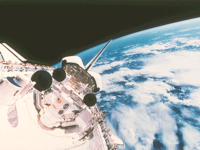
Mission: STS-66
Landing: 3 November 1994
Duration: 10 days 22 hours 34 minutes
Atterrissage: 14 November 1994
One year and half after the ATLAS-02 mission, the same instrument was on board the Atlantis space shuttle, for the ATLAS-03 mission. All was very similar to ATLAS-02 mission.
Missions
Space Control Center
(JSC - Houston)

Atlas-02 Mission Description
Instrument Description
Space Remote Operations Centre SROC - Brussels
(Photo IRM)
Atlas-01 Payload
in Shuttle Cargo Bay
(photo NASA)
ATLAS-01 Personnel
KSC - O&C Building
June 1991
(photo NASA)
Eureca Deployment using
the Remote Manipulator Arm
(photo NASA)
EURECA Retrieval
(photo NASA)
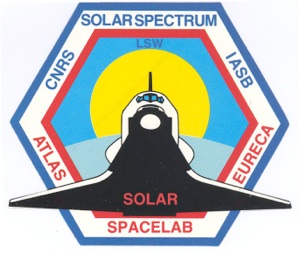
The Eureca mission description is included in this file Eureca.pdf.
Instruments Location on Spacelab-1 Pallet
1ES016 in red
Instruments Location
on Atlas-03 Pallet
The French funding for these missions have been totally provided by the French space agency: CNES.

